Alexandra Heller-Nicholas
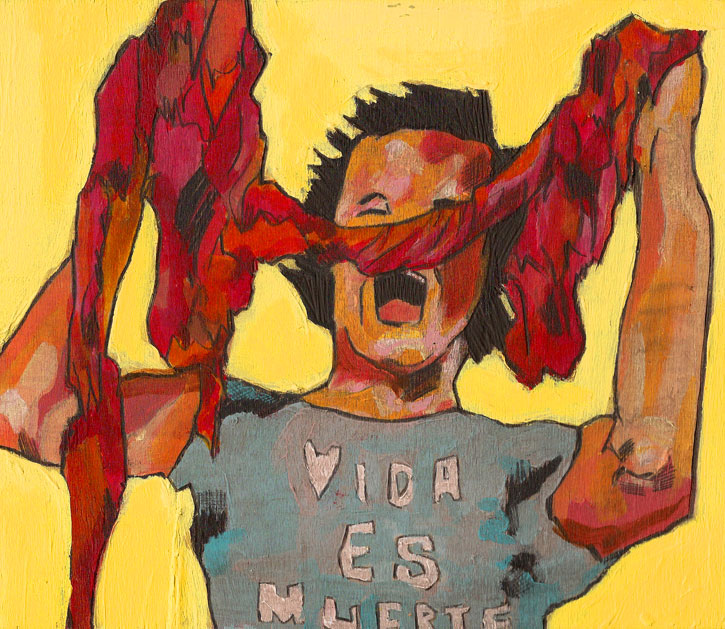
Snuff (Findlay/Nuchtern, 1976) might not be the ‘best’ film produced in the Americas in the 1970s, but it may be the decade’s most important ‘worst’ film. Rumoured to depict the actual murder of a female crewmember in its final moments, its notoriety consolidated the urban legend of snuff film. The snuff film legacy has manifested across a broad range of media, from fictional snuff narratives like Vacancy (Nimród Antal, 2007) and 8mm (Joel Schumacher, 1999), to purportedly real snuff footage distributed online and through mobile phones. Despite Snuff’s status as a unique trash artefact, the suddenness with which the controversy exploded into the public arena allowed it very little time for a ‘micro’ analytical moment.[1] The snuff film enigma was so intoxicatingly extra-diegetic that it instantly transcended the nuts-and-bolts details of the film itself. The shocking impact of those final five minutes appeared to render close analysis unnecessary: Snuff, like snuff, was predicated upon a hyperactive theatricality of ambiguity, rumour and moral panic.
The power inherent in the word “snuff” is dependent upon its vagueness; its enigmatic force stems directly from its nebulousness as a concept. Not only has snuff been defined in different ways across a range of different contexts, it is the haziness with which the term is utilized and applied in practice in both critical and non-critical discourse that enforces its status as such a resilient and dynamic taboo. Simply, a contemporary understanding of snuff is located at the intersection of film, death and “the real.” The snuff movie may be intrinsically filmic in form, but the force of its impact-the fear, anger, revulsion and fascination it produces-invites engagement with discourses about gender, power and the very notion of representation itself.
Over thirty years since its release, Snuff receives very little critical attention outside of historical analyses of film violence and the antipornography movement, or paracinematic critiques that more often than not mock the undeveloped gore-literacy of those who fell for the hoax at the time of the film’s release.[2] But considering that snuff film has remained such a consistently viable source of terror (despite shifts in both camera technologies and modes of distribution), an exhumation of the Snuff coda raises a startlingly overlooked feature. While the unnamed ‘director’ figure and his blonde victim remain two of the most notorious onscreen figures in paracinematic history, the presence of a third figure, ‘June’ (the only named person in the entire sequence)[3] has gone almost completely unacknowledged.[4] It is in light of this omission that this article revisits the Snuff coda.
The Snuff Scandal
Given the scope of its impact, the production history of Snuff is appropriately complex. The version released in cinemas in 1976 was a conglomerate of two sections, filmed four years apart. The first 74 minutes were made by husband-and-wife director/cinematographer team Michael and Roberta Findlay in 1971, who were renowned for their “roughies” such as Body of a Female (1965), The Ultimate Degenerate (1969), and the Her Flesh trilogy (1967-9). Initially called The Slaughter, it was a low-budget exploitation film made in South America based loosely on the Charles Manson ‘Family’ murders. The gory coda was made in 1975 and was funded by distributor Allan Shackleton of Monarch Releasing Corporation (Johnson and Schaefer 43). Shackleton had bought The Slaughter years earlier, but had encountered difficulties releasing it on the Findlays’ familiar grindhouse circuit due to what were-even by forgiving exploitation standards-severe technical problems with the audio dubbing (Kerekes and Slater 11). Hastily organizing the filming of the notorious coda in New York with director Simon Nuchtern and marketing the final product as an actual snuff film, Shackleton’s promotional campaign included the release of phony newspaper clippings that documented the outrage of non-existent moral conservatives (Stine). By the time the hoax was exposed, it was too late: Snuff had captured the interest of the public, and an urban legend was born.
Antipornography feminist responses to Snuff were fiery. With its gimmicky, self-imposed “X” rating for violence, the blurring between “hard-core gore” and “hard-core porn” (Johnson and Schaefer 51) meant that for many-most notably Beverly LaBelle in her essay “Snuff-The Ultimate in Woman-Hating” (1976)-the authenticity of the violence was unquestionable. If sex in X-rated porn is real, it follows that so is murder in X-rated gore films. But the eventual exposure of the hoax was far from a chink in the antipornography movement’s armour. This confusion regarding the authenticity of the Snuff coda allowed antipornography feminist discourse to smoothly negotiate the gap between the literal and the symbolic, converting their debate from the singular and text-specific to the broader domain of representation. As Jane Caputi put it, the confusion in Snuff between what was real murder and what was a simulation was precisely the issue: “there seems to be no sure way to discern on film what is faked and what is […] real, which is a ‘symbolic annihilation’ and which is an actual one” (168). In terms of reception, she argued, this indistinguishability rendered them effectively (and regressively) the same.
The scale and voracity of this type of feminist discourse rendered close analysis of the film itself redundant. As Johnson and Schaefer observe, its broader cultural meaning was always the source of attention: “Among those who denounced Snuff, morality assumed greater significance in their arguments than the film itself, which was often inaccurately described, whether for rhetorical effect or for lack of close analysis” (51). So great was the symbolic force of the Snuff coda that it overshadowed interest in its actual content. The absence of June in the vast amount of criticism concerning the film suggests that this still has yet to be remedied.
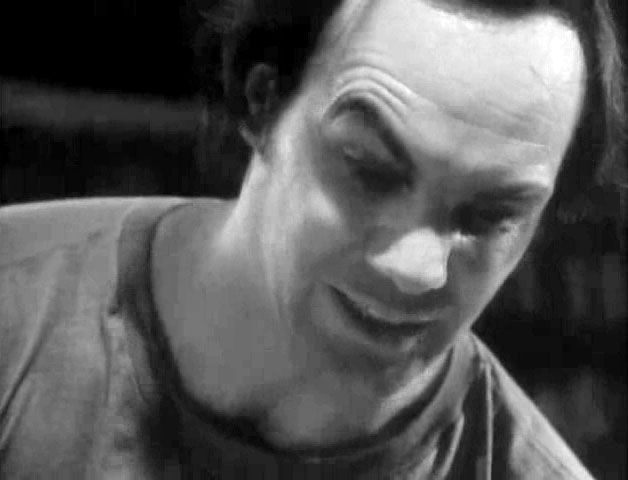
The Snuff Coda
Many have observed that formal traits such as continuity editing belie the authenticity of the Snuff coda as an actual murder filmed in one continuous take.[5] However, of greater concern to a contemporary consideration of the film and the surrounding scandal is the omission of this third figure. The Slaughter ends with pregnant blonde actress Terry London (a character not wholly dissimilar to Sharon Tate) being stabbed on a bed by a female member of the Family-like cult. This scene fades and then cuts to a long establishing shot of 51 seconds that marks the beginning of the Snuff coda. The shot is composed of a group of people surrounding the bed: in the centre of the room is a blonde woman dressed in (virtuous) white, and in the foreground on the side, a brunette woman dressed in (villainous) black who carries a clipboard. Once the “cut” command is given, everyone works busily. The camera pans across, and more crewmembers are shown in the background. In the foreground is a second bed: its illogical introduction into the scene, combined with its privileged placement in the foreground, foreshadows its significance.
Two separate groups now form. On the centre-left, the ‘director’ speaks to the blonde woman. They touch each other in a sexually familiar way, and he tells her how the murder scene they just shot aroused him. On the centre-right of the shot three crewmembers are in discussion, including the brunette woman later identified as June. This woman walks off camera to the left of the shot momentarily, only to reappear at the head of the unused bed where she adjusts a pillow, and takes notes on her clipboard.
The blonde woman expresses discomfort at having sex in front of “all these people,” but regardless, she and the director begin to kiss. There is an abrupt shift to hand-held camera movement that, when combined with the shots of cameras and other cameramen in the frame, creates a sense that these events are being filmed ‘live’. Zooming in on the couple, the director is holding a knife, while in the background June is focused intently upon her clipboard. As the couple lie kissing on the bed, June puts down her clipboard: this small act significantly alters her involvement from a ‘crewmember’ to an active performer in the action that follows.
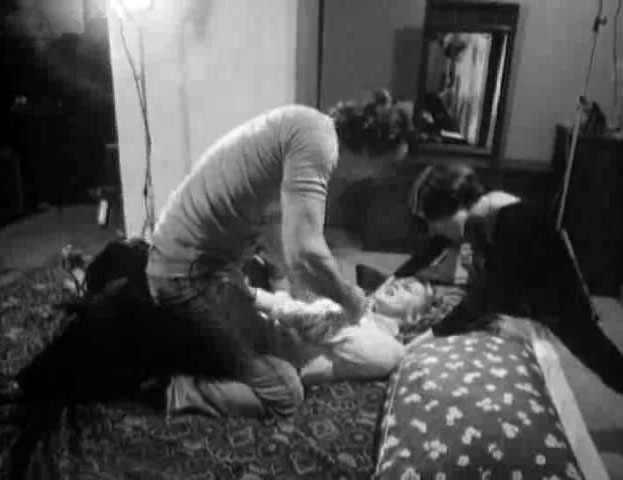
The blonde woman becomes increasingly agitated when she realizes that she and the director are being filmed. June stands at the end of the bed next to a small table with a collection of weapons placed upon it, and a toolbox on the floor. The mise-en-scène frames June as a sort of ‘nurse’ about to assist in surgery, a comparison that gains resonance throughout the scene. As the blonde woman becomes more frantic, the albeit brief point-of-view shot of June from the director’s perspective that follows is integral to this re-evaluation of the Snuff coda. This shot could be easily mistaken as a point-of-view shot of June from the victim’s perspective: it is only logical perhaps to feel that, as another woman, June is the blonde woman’s most likely ally, and her only means of possible escape from this increasingly dangerous situation. However, the shot is not from the victim’s perspective at all, which beckons the question: Why would the director stop at this pivotal point and look to see what June’s reaction was? Regardless of the answer, there is no denying that this look formally includes her in the action unfolding onscreen. The presence of June in the Snuff coda therefore rejects the simplistic ‘men versus women’ scenario that it is so often purported to be, and upon which much of its ideological debate is based. Its sexual politics are far more complex. The female victim is not only at the mercy of a man, she is tortured by a man, and restrained by a smiling woman. As an off-camera male voice directs June to “hold her down,” it may be argued that June is following these orders to avoid being tortured herself. But the evidence within the coda does not support such a reading; her smiling face belies such a claim.
This formal inclusion of June is reiterated just before the first act of violence when the blonde woman’s shoulder is cut. During a three-second shot (as the director asks his victim “You think I’m kidding do you?”), June is also granted a point-of-view shot as she looks at the director. While it is only a brief shot, it is a crucial one, since it is June’s perspective that is formally privileged and it reciprocates the glance just described. Her involvement is made explicit: this shot not only sets up a formal relationship between June and the director, but acknowledges that a woman is watching these events. This suggests the presence of an active and sadistic female gaze, and so once again, the battle lines between men and women may not be as clearly demarcated here as has been commonly contended.
Moreover on this point, June becomes increasingly excited in her remaining time on screen. On numerous occasions, she is shown in the same shot as the victim and the director, smiling and restraining the woman. After a saw is introduced to the gruesome proceedings, her pleasure becomes even clearer. As the victim’s suffering and terror increase, her reaction–legs straddled, mouth open, smiling-implies a sexual aspect to her involvement. The last shot of June’s face (there is a brief shot after this of her hands holding the blonde woman down) is taken from the point-of-view of the director, whose gaze captures his accomplice’s arousal at the victim’s trauma. June’s involvement in the violence is confirmed once more as she is granted the privileged reaction shot to the most explicit gore shot thus far when the victim’s hand is severed.

This is the last time June is shown onscreen. As the violence enters its second, more explicit stage, it is worth asking: Where is she? Where did she go? The soundtrack becomes increasingly ambiguous as the sound of the victim’s final breaths blurs with groans of pleasure ostensibly coming from the director. In the moments before the blonde woman’s is eviscerated, a heartbeat can also be heard. But whose heartbeat is it? It may be the victim’s, because the sound is only heard when her exposed organs are shown. However, as she is dying, one may deduce that her heartbeat would not be so steady. Alternatively, it may be the director’s, but the sound appears to come from a point closer to the camera. Perhaps it is a synthetic estimation of the spectator’s own heartbeat from the perspective of their surrogate onlooker, the cameraman. If the latter is the case, the emphasis of the soundtrack is significantly not on the onscreen bodies themselves, but rather upon the spectator’s own capacity to witness violence. This would appear to consciously acknowledge the spectator’s complicity in the onscreen violence. As the lines between diegetic and non-diegetic spaces crumble, there manifests within the film a self-reflexive awareness as it articulates that yes, audience, the bodily violence on display is there solely for your benefit. That snuff and screen violence in general are so often addressed in terms of the visual makes this a unique aural indictment of the spectator and their involvement with onscreen violence.
One can also speculate that there is another possibility: the heartbeat may belong to June. Having been so pleasurably involved in the action, it makes sense that she is still watching. If this is the case, despite her physical absence within the frame, she is (again) granted a privileged position that suggests the victim’s torture has in fact been a twisted sexual union between the director and June. That she shifts from assistant to audience at the same point that the violence so drastically increases exposes what has been implied throughout the entire sequence: the possibility that the Snuff coda may be a filmic haiku of deviant romance between June and the director on par with longer cinematic love ballads like The Honeymoon Killers (Leonard Kastle, 1970) or Natural Born Killers (Oliver Stone, 1994). It is only logical that discussion about snuff film leads to other notorious examples such as Cannibal Holocaust (Ruggero Deodato, 1980) and the Japanese “guinea pig” films (1985-1991), and to the gruesome home movies of Californian serial killers Leonard Lake and Charles Ng. But the relationship between June and the director in the Snuff coda offers another film history and true-crime heritage: their story might fit more seamlessly in a consideration of cases such as Fred and Rosemary West in the United Kingdom, Karla Homolka and Paul Bernardo in Canada, Catherine and David Birnie in Australia, and Gerald and Charlene Gallego in the United States.
Taken less symptomatically, this twisted romance between June and the director also reflects one of the key aspects of the first 74 minutes of the film itself. The Slaughter and the Snuff coda are so often viewed as separate entities because of their production history that it is perhaps too easy to miss how explicitly the coda relates to the film as a whole (Johnson and Schaefer, and Mikita Brottman’s writing on the film are notable exceptions). That The Slaughter tells of a group of women on a murderous rampage neatly provides a contrast with the coda, marking it as a desperate, and both physically and formally violent, return to a male-dominated status quo. A simple body count supports this claim: as Brottman states, “virtually all the violence in Snuff is perpetrated by women on men, or other women” (104). After the all-girl killing spree that makes up the bulk of The Slaughter, it is of note that the first time a man kills anyone in the film is almost an hour in (and in his defence, he shoots one of the female gang members after he himself has been stabbed and the women have killed an elderly woman and a young female child during a hold up at a general store). Even more explicitly, The Slaughter concentrates much of its (admittedly loose) plot upon a deviant romance between Angelica (Margarita Amuchástegui) and its Charles Manson figure, Satan (Enrique Larratelli); the gruesome relationship between June and the director provides a neat parallel to this plot element within The Slaughter. Like June herself, however, this brief and degenerate affair has been lost to history, sacrificed in favour of the ideological debates that so famously marked the film’s original release.
The final seconds of Snuff show the director disembowelling his victim, removing viscera and lifting it victoriously above his head with a scream. As the screen fades to white, two male voices whisper and ask, “Did you get it all?” Bereft of end credits and lacking other formal indicators of closure, the suddenness of the film’s conclusion adds weight to claims of its authenticity. Even to gore-literate viewers today for whom the ketchup-red splatter and cocktail-wiener guts may seem a little kitsch, it is difficult to deny the disorientating effectiveness of this trickery. While few would dare defend Snuff as any great cinematic masterpiece, that previous analyses of the film have generally ignored the role of June is a telling omission. This article does not suggest that the presence of June suddenly transforms Snuff into a progressive text-in fact, there is a strong argument to be made that the idea of a woman being sexually aroused and complicit in the torture of another woman is evidence of some deeply regressive male fantasies regarding violence against women. Not only are women not offended by it, it seems to say, but they enjoy it too. In this sense, the film functions as an active breaking down of the united force of women that was so visible around the period of the film’s release. Importantly, however, the fact that June has been so widely ignored means that these very real issues have yet to be properly addressed. It is of no small interest to debates on gender and film that in the name of championing the rights of one woman, another has been eradicated so completely from the cultural memory. Any critical attempts to grasp the broader phenomenon of snuff film-be it as an urban legend, a popular fictional trope or as a real, tangible part of contemporary screen cultures-must reconsider the ease with which historical perspectives regarding Snuff have been so dramatically skewed away from any reading that incorporates the presence and function of June.
Notes
[1] As discussed in Brottman (1997), Hawkins (2000), Jackson (2003), Johnson and Schaefer (1993), Kerekes and Slater (1995) and Stine (1999).
[2] “In retrospect, it seems amazing that anyone mistook Snuff’s violence for cinema vérité” (Hawkins 137); “Not only is the gore obviously fake, but the execution of the special effects is painfully inept” (Stine).
[3] She is called by an off-camera voice in shot 7, and is directed to “hold her down.” The low quality of the sound recording here slightly blurs the sound of the name, but on careful examination, it is either June or Jude. That Jude is generally a male name and that the figure is clearly female suggests, purely by a process of deduction, that her name is quite probably June.
[4] Eithne Johnson and Eric Schaefer do identify her presence, but only in passing. They do not mention that she is named, nor is any further significance placed upon her involvement: “After briefly embracing on an adjacent bed while fully clothed, the director pins the actress down with the help of a female crew member and beings to torture her with a knife” (49-50).
[5] Say Johnson and Schaefer: “Continuity errors from shot to shot reveal the artifice, as does the actress’s prosthetic torso, from which the director pulls the entrails” (40). For Neil Jackson, “the cutaways, multiple camera angles and unconvincing prosthetics utilized in Snuff‘s final sequence all signal the artifice underlying the film’s […] central conceit.”
Works Cited
Brottman, Mikita. Offensive Films: Towards an Anthropology of Cinema Vomitif. Westport: Greenwood Press, 1997.
Caputi, Jane. The Age of Sex Crime. London: The Women’s Press, 1987.
Hawkins, Joan. Cutting Edge: Art-Horror and the Horrific Avant-Garde. Minneapolis: Minnesota UP, 2000.
Jackson, Neil. “The Cultural Construction of Snuff: Alejandro Amenábar’s Tesis (Thesis, 1996).” Kinoeye 3.5 (2003). 30 March 2008. <http://www.kinoeye.org/03/05/jackson05.php>.
Johnson, Eithne, and Eric Schaefer. “Soft Core/Hard Gore: Snuff as a Crisis in Meaning.” Journal of Film and Video 42.2-3 (1993): 40-59.
Kerekes, David, and David Slater. Killing for Culture: A History of Death Films from Mondo to Snuff. London: Creation Books, 1995.
LaBelle, Beverly. “Snuff-The Ultimate in Woman-Hating.” Take Back the Night: Women on Pornography. Ed. Laura Lederer. New York: William Morrow and Company, 1980. 272-278.
Stine, Scott Aaron. “The Snuff Film: The Making of an Urban Legend.” Skeptical Inquirer 23.3 (1999): 29.


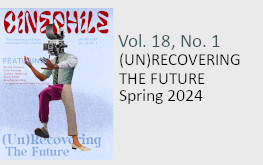
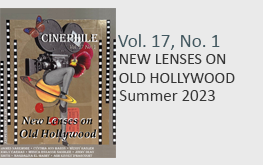
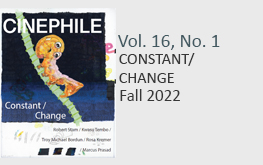
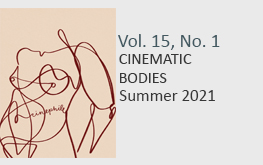
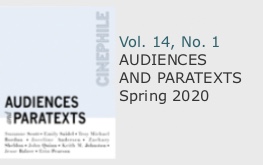
[…] Alexandra Heller-Nicholas on history, death and ‘Snuff’ over at Cinephile […]
[…] Boxing: Rethinking the Snuff (1976) Coda”, Cinephile: The University of British Columbia Film Journal. 5.2 […]